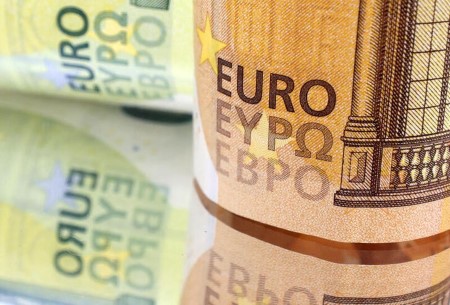




Monthly Economic Update: One for the road
 DOWNLOAD
DOWNLOAD

Inflation Update: Still low, still slow
 DOWNLOAD
DOWNLOAD

Philippines Trade Update: Exports momentum continues
 DOWNLOAD
DOWNLOAD


Euro rebounds ahead of ECB hike, Russian gas restart; yen yawns at BOJ

TOKYO, July 21 (Reuters) – The euro rebounded on Thursday, rising back toward a two-week high to the dollar, as investors braced for the European Central Bank’s first interest-rate increase since 2011 and the scheduled reopening of a key Russian gas pipeline later in the day.
Meanwhile, the yen shrugged off the Bank of Japan’s as-expected decision to stick with ultra-easy policy settings.
The euro gained 0.3% to USD 1.02095, clawing back part of a 0.39% retreat on Wednesday, when it also hit an intraday peak of USD 1.0273, the highest since July 6.
The euro had enjoyed three sessions of strong gains this week on expectations the ECB might deliver a big 50 basis-point rate hike and a Reuters report that a key Russian gas pipeline would reopen on time following a 10-day maintenance shutdown.
The European Union asked member states on Wednesday to cut gas usage by 15% until March as an emergency step after President Vladimir Putin warned that Russian supplies sent via the biggest pipeline to Europe could be reduced further and might even stop.
Markets are split on whether ECB policymakers will deliver a previously telegraphed 25 basis-point increase or a half-point rise to try to wrestle down runaway inflation. The monetary authority is also likely to provide more details of a new tool aimed at controlling outsized rises in bond yields on Europe’s periphery.
The outlook for the region has been further complicated by the looming collapse of the Italian government.
National Australia Bank sees the ECB meeting having mixed implications for the euro.
“Italy’s political uncertainty complicates the ECB plans to deliver details on its new anti-fragmentation tool, especially regarding the conditions for the tool to be triggered,” and a lack of clarity is likely to drag on the euro, NAB currency strategist Rodrigo Catril wrote in a client note.
At the same time, NAB expects a half-point hike and guidance for another half-point increase in September “with the Bank aiming to front-load rate hikes ahead of weaker conditions later in 2022 and into 2023, when room to move may be more limited,” Catril said.
In Japan, the central bank continued to buck the global monetary tightening trend by keeping stimulus settings steady, even as it raised its inflation forecast.
The dollar inched up 0.05% to 138.34 yen, edging back in the direction of the 24-year high at 139.38 seen one week ago.
Sterling continued to consolidate below USD 1.20, last trading little changed at USD 1.1984, as the field of candidates vying to be Britain’s next prime minister shrank to two, but a winner is not expected to be announced until Sept. 5.
The Australian dollar AUD=D3 added 0.08% to USD 0.6895, while the New Zealand dollar slipped 0.1% to USD 0.6224.
(Reporting by Kevin Buckland; Editing by Sonali Desai)
This article originally appeared on reuters.com





 By Reuters
By Reuters